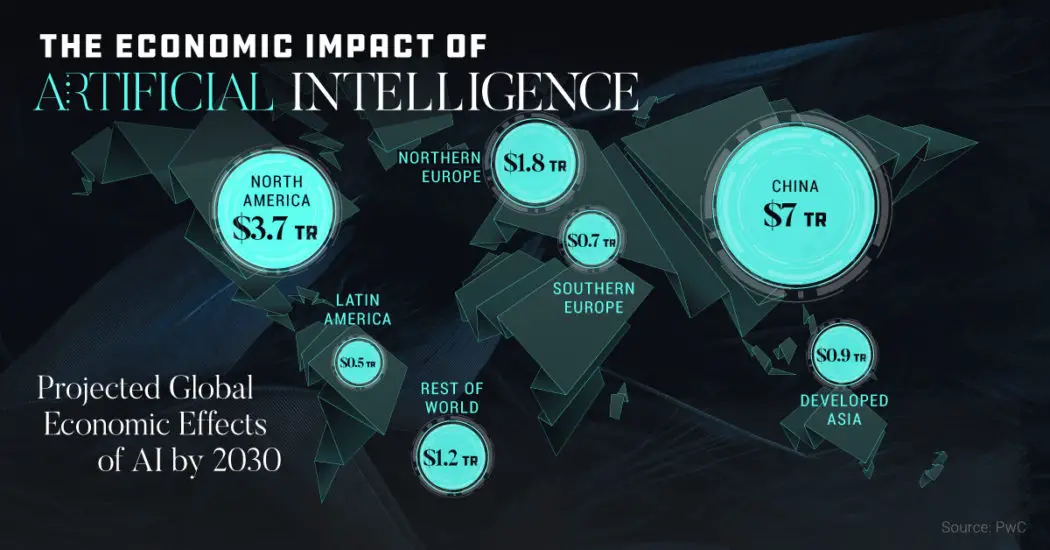The Impact of AI on Traditional Industries: A Closer Look at Textiles and Construction

Executive Summary:

Artificial intelligence (AI) is rapidly transforming industries across the board, including traditional sectors such as textiles and construction. By leveraging AI’s capabilities for data analysis, automation, and predictive modeling, businesses in these industries can enhance efficiency, optimize processes, and gain a competitive edge. This article delves into the profound impact of AI on textiles and construction, exploring its transformative potential and the challenges it presents.

Introduction:
The advent of AI is bringing about unprecedented technological advancements, disrupting established industries and giving rise to innovative solutions. In the realm of manufacturing and infrastructure development, AI is poised to revolutionize processes, foster innovation, and redefine the landscape of traditional industries. This comprehensive analysis examines the transformative effects of AI on textiles and construction, two sectors where technology is progressively reshaping operations and driving growth.
Frequently Asked Questions (FAQs):
Q1. How Can AI Improve Efficiency in Textile Production?
Q2. What Are the Advantages of Using AI in Construction Project Management?
Q3. How is AI Driving Innovation in the Construction Sector?
Subtopic 1: Design and Development
AI-powered design tools leverage advanced algorithms and machine learning techniques to streamline the product development process in textiles.
- Automated Pattern Generation: AI systems reduce manual labor by creating intricate patterns and designs based on specified parameters.
- Virtual Sampling: Digital fabric simulations allow designers to preview and modify designs virtually, reducing prototyping costs and time.
- Personalized Recommendations: AI algorithms analyze customer preferences to provide tailored design suggestions, enhancing product desirability.
Subtopic 2: Manufacturing and Production
AI optimizes textile manufacturing processes by integrating data analysis and automation.
- Predictive Maintenance: AI monitors equipment data to predict failures, enabling proactive maintenance and maximizing uptime.
- Automated Quality Control: AI-powered vision systems inspect fabrics for defects, ensuring high-quality production and reducing manual inspection costs.
- Optimized Inventory Management: AI analyzes sales patterns and forecasts demand, optimizing inventory levels and preventing stockouts.
Subtopic 3: Construction Planning and Management
AI transforms construction project management by enhancing collaboration, improving planning, and mitigating risks.
- Collaborative Project Platforms: AI-enabled platforms provide a centralized platform for stakeholders to share project information, track progress, and resolve issues seamlessly.
- Predictive Scheduling: AI algorithms analyze historical data and project dynamics to generate optimized project schedules, minimizing delays and enhancing resource allocation.
- Risk Assessment and Mitigation: AI models analyze potential risks and develop mitigation strategies, reducing uncertainties and safeguarding project success.
Subtopic 4: Construction Execution and Monitoring
AI introduces automation and data analysis to enhance on-site construction processes.
- Automated Equipment Control: AI-driven robotic systems handle repetitive or hazardous tasks, improving safety and efficiency.
- Real-Time Monitoring: Sensors and cameras integrated with AI analyze project progress and detect deviations, enabling timely interventions.
- Predictive Analytics for Maintenance: AI algorithms predict maintenance needs based on sensor data, optimizing equipment performance and reducing downtime.
Subtopic 5: Sustainability and Resource Optimization
AI contributes to sustainability and resource efficiency in both textiles and construction.
- Sustainable Material Selection: AI algorithms analyze material properties and recommend eco-friendly alternatives, reducing environmental impact.
- Energy Efficiency Optimization: AI monitors energy consumption patterns and suggests energy-efficient solutions, such as smart lighting and HVAC systems.
- Waste Reduction: AI systems track and analyze waste generation data, identifying opportunities for reuse or recycling.
Conclusion:
AI is profoundly transforming the textiles and construction industries, unlocking new possibilities and driving growth. By embracing AI’s capabilities, businesses can enhance efficiency, optimize processes, and gain a competitive edge in this rapidly evolving technological landscape. However, it is essential to address the challenges associated with AI adoption, such as skill gaps and ethical considerations. As the technology continues to advance, the potential for AI to revolutionize these traditional industries is virtually limitless.
Keyword Tags:
- AI in Textiles
- Construction AI
- Textile Manufacturing Automation
- Construction Project Management
- Sustainability and AI
